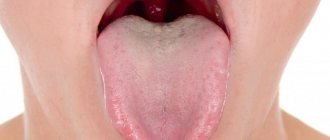Pneumonia is a common disease that affects adults and children, requiring timely and qualified treatment. Otherwise, the consequences of the disease can be extremely severe. The main symptom of pneumonia is sputum production. Its color allows the specialist to draw conclusions regarding the severity and nature of the disease.
When the first signs of pneumonia appear, the patient should definitely consult a doctor. You can make an appointment at the Yusupov Hospital using the electronic form on the website or by phone.
Pneumonia itself occurs extremely rarely. As a rule, it is a complication of advanced forms of diseases of the respiratory system. The doctor prescribes a course of treatment for pneumonia depending on the nature of the disease. Pneumonia can be:
- bacterial;
- viral;
- fungal;
- mixed.
The main symptom of pneumonia in children and adults is sputum. It is its color that is taken into account when making a diagnosis. To prevent the development of pneumonia, it is important to seek medical help for any ailments.
Doctors at the Yusupov Hospital are leading specialists in Russia who select an individual treatment program for each patient, allowing them to cure any disease in the early and advanced stages. Timely consultation with a doctor and an effective course of treatment can prevent the development of such a serious pathology as pneumonia.
Sputum with wet cough
Before treating a wet cough in an adult, it is necessary to conduct a laboratory test of sputum to determine the nature of the disease. Tracheobronchial secretion may have a liquid, thick or viscous consistency. The presence of a large amount of mucus in it signals the presence of an allergic or cold-infectious process in the bronchi and lungs. The yellowish-green color of sputum, caused by impurities of pus, may indicate the development of bronchitis or pneumonia. The appearance of white, cheesy discharge during expectoration warns of the likelihood of a fungal respiratory infection, and clear, watery sputum usually accompanies viral infections or chronic diseases of the respiratory system.
It is important to know!
When treating a wet cough accompanied by sputum discharge, the use of antitussive drugs is contraindicated. By blocking the central or peripheral parts of the corresponding reflex, they lead to the accumulation and stagnation of a large amount of mucus, which is a favorable environment for the proliferation of pathogenic microflora. Drugs for the treatment of wet cough are mucolytic agents. The group of modern effective mucolytics made on the basis of plant components includes Doctor MOM® syrup and Doctor MOM® herbal lozenges.
Causes of mucous sputum
Chronic rhinitis
Cough with mucous sputum during rhinitis is caused by irritation of the back wall of the pharynx by flowing mucus. The patient experiences soreness and a sensation of a foreign body in the throat, to eliminate which a cough reflex occurs. Expectoration of a small amount of clear discharge occurs in the morning after sleep, as well as during prolonged periods of lying down. After coughing up mucous sputum, the discomfort disappears.
Pharyngitis
For inflammation of the pharynx, a dry cough is typical, but sometimes it turns into a wet cough with the release of mucous sputum. Pharyngitis is manifested by expectoration of a small amount of clear mucus that does not have an unpleasant odor. The symptom persists for 3-5 days, combined with a constant sore throat. An attack of coughing with expectoration of sputum begins without visible provoking factors, but can intensify with loud speech or inhalation of cold air.
Chronic hyperplastic laryngitis
This pathology is characterized by the release of a scant amount of mucous sputum in the morning, accompanied by a sore throat and coughing. The symptom bothers a person for 3 weeks or more. For laryngitis, a constant sensation of a foreign body and discomfort in the throat is pathognomonic. An attempt to cough results in the appearance of a small amount of mucus, usually without bringing relief.
Tracheitis
The disease manifests itself with the release of clear mucus after a paroxysmal painful cough. Gradually, the volume of mucous sputum increases and it becomes cloudy. If tracheitis develops against the background of a bacterial infection, purulent streaks appear in the mucous secretion. Patients complain of frequent cough paroxysms that occur when laughing, talking loudly, or taking deep breaths.
Bronchitis
Coughing up medium or large amounts of mucous sputum is a typical sign of bronchial catarrh. In an acute process, a constant cough and the discharge of clear or cloudy mucus without an odor are disturbing. Symptoms last 1-3 weeks. In chronic bronchitis, expectoration of mucous discharge lasts several weeks or even months. Coughing up mucous sputum in the morning is typical of smoker's bronchitis.
Mucous sputum
Atypical pneumonia
Expectoration of large amounts of mucus occurs with pneumonia of viral or mycoplasmal etiology. Sputum production begins 2-4 days after the onset of the disease. The mucus is clear, without pathological inclusions, sometimes it is viscous and difficult to cough up. The symptom is supplemented by febrile fever and chest pain. If coughing and expectoration of mucous sputum lasts more than 3 months, prolonged pneumonia is diagnosed.
Whooping cough
A cough with expectoration of mucous sputum is characteristic of the period of resolution of the infectious process. At this time, cough paroxysms become rare and less durable; after an attack, the child spits out clear mucus in small quantities. Given the severity of whooping cough, symptoms last from several days to several months. Gradually, the amount of secreted mucous sputum decreases.
Pulmonary edema
The release of clear sputum when coughing is observed at the stage of alveolar edema, when fluid enters the lungs from the blood vessels. The condition develops suddenly, the patient experiences difficulty breathing and tries unsuccessfully to clear his throat. The amount of mucus secreted increases. In severe cases, instead of mucous sputum, pink foam appears when breathing and coughing, indicating the entry of red blood cells from the blood into the alveoli.
Lung adenocarcinoma
In the initial stages of the disease, a person is bothered by periodic coughing, accompanied by the release of liquid transparent mucus. As a malignant tumor progresses, a large amount (up to 1-2 liters per day) of watery sputum is formed in the lungs and bronchi, which the patient is forced to constantly cough up to make breathing easier. If adenocarcinoma grows into surrounding tissue, the mucus is replaced by bloody sputum.
Foreign body of the bronchus
If the foreign object is small, breathing is preserved. The patient is bothered by a periodic cough, during which clear liquid mucus is coughed up. Symptoms are observed until the foreign body is removed. If this does not happen, inflammation develops in the bronchus with an increase in the amount of mucous sputum secreted, which over time becomes more cloudy and viscous.
Inhalations for wet cough
A productive wet cough without fever can be treated with inhalations. These procedures, based on the inhalation of medicinal and biologically active substances, help reduce thickness and viscosity, more actively liquefy and remove sputum. To treat coughs, steam inhalers and nebulizers are used, to which special medications are added. Inhalations that help moisturize the mucous membrane help to quickly reduce pain, reduce the viscosity of sputum, eliminate spasms and relax the muscles of the bronchi. You can use Doctor MOM® Phyto ointment, which is locally irritating , distracting, anti-inflammatory and antiseptic effect.
Diagnostics
The initial examination of a patient with complaints of mucous sputum is often performed by a general practitioner, who, if necessary, gives a referral to an otolaryngologist or pulmonologist. To make a preliminary diagnosis, it is enough to collect complaints, auscultate the lungs, and visually examine the tonsils and pharynx. The plan for clarifying diagnostic studies includes the following methods:
- ENT examination.
With direct and indirect laryngoscopy, the doctor assesses the condition of the laryngeal mucosa, identifies signs of inflammation and hypertrophy. Using a fibrolaryngoscope, a biopsy of atypical areas is performed. If a chronic runny nose is suspected, anterior and posterior rhinoscopy provides valuable information. - X-ray of the OGK.
Carrying out an x-ray in two projections allows us to identify changes typical of inflammatory or tumor processes of the bronchopulmonary system. To clarify the diagnosis, targeted studies are prescribed: fluoroscopy and MRI of the chest organs. - Endoscopic diagnostics.
During bronchoscopy, the mucous membrane of large and medium-caliber bronchi is visualized. The method is used to diagnose chronic bronchitis, neoplasia, fibrotic changes. Using endoscopy, biopsies for histological examination and bronchial lavage water are taken. - Sputum analysis.
Culture of bronchial mucus is necessary to identify viral or atypical bacterial infections. When microscopy of mucous sputum, attention is paid to pathognomonic crystals and spiral-shaped accumulations of mucus. To exclude tuberculosis, microscopy of the material after special staining is required.
Among laboratory methods, a general blood test is informative, allowing one to differentiate inflammatory and other pathologies of the respiratory system. In a biochemical study, acute-phase indicators are studied. Serological tests aimed at searching for antibodies to pathogenic microorganisms are recommended. To measure the function of external respiration and diagnose chronic diseases, spirometry and peak flowmetry are indicated.
Sputum analysis
Drink plenty of warm fluids for wet coughs
When answering the question of how to cure a wet cough in an adult, it is worth mentioning another necessary and effective method of treatment: drinking plenty of vitamins. During a cold, you should drink more liquid than usual to moisturize the mucous membrane and quickly thin the mucus. This can be warm mineral water, herbal decoctions, teas, fruit drinks, milk in combination with honey, etc.
Symptoms of mucus in the throat
Typical symptoms of mucus in the throat include:
- Feeling of burning and rawness in the throat;
- Sore throat;
- Unpleasant sensations when swallowing;
- Constant desire to cough;
- Lump in throat.
Common symptoms include headaches and enlarged cervical lymph nodes. When a person begins to experience a sore throat or a pleasant sensation while swallowing, these symptoms may indicate mucus in the throat. In other words, a lump in the throat is felt due to a constant desire to cough.
The method of treating mucus in the throat is determined only by an ENT doctor after a comprehensive examination.
Mucolytic drugs against wet cough
One of the remedies indicated for use for coughs with the discharge of viscous sputum is Doctor MOM® syrup. The components included in this medicine have a complex of therapeutic properties, due to which the syrup has the following effects:
- Anti-inflammatory;
- Mucolytic;
- Bronchodilator;
- Expectorant.
For inflammatory diseases of the respiratory tract, accompanied by an unproductive cough, the use of Doctor MOM® drugs helps reduce negative symptoms and restore the normal state of the bronchi and lungs. To avoid disruption of the discharge of liquefied sputum, expectorant herbal syrup is not recommended to be taken in combination with antitussive drugs, which are aimed at blocking the cough reflex, and not at treating cough.
Treatment
Help before diagnosis
In case of acute inflammatory damage to the respiratory system, unimpeded discharge of mucous sputum should be ensured. To improve the drainage function of the bronchial tree, it is recommended to drink plenty of warm drinks and maintain optimal air humidity in the room. All drug treatments can only be used after a visit to a doctor.
Conservative therapy
Mucous sputum as a symptom does not require special treatment, since it disappears after affecting the underlying disease. In cases where there is too much mucus and its expectoration is difficult, postural drainage techniques are recommended, and medications with mucolytic and secretomotor effects are prescribed. Physiotherapy methods are effective - alkaline and oil inhalations, UHF and electrophoresis on the anterior surface of the chest.
To influence the root causes of the discharge of mucous sputum, antiviral and antiallergic drugs are used. Antibiotics are not indicated; they are used only when the bronchial discharge is mucopurulent. Anti-inflammatory medications speed up recovery and relieve subjective symptoms. For chronic bronchitis, therapeutic bronchoscopy is performed for lavage and targeted administration of medications.
Sputum from pneumonia mixed with blood
The presence of a pinkish tint of mucus, streaks and blood stains in it may indicate various diseases, the most dangerous of which is lung cancer.
But sputum mixed with blood can also appear when:
- pneumococcal pneumonia
- internal bleeding;
- tuberculosis;
- pulmonary edema due to chronic heart failure;
- lung abscess.
The appearance of sputum with blood is always a sign of a serious illness and requires urgent medical intervention. The Yusupov Hospital accepts patients 7 days a week, 24 hours a day. You can make an appointment with a doctor in advance by calling the clinic’s phone number.
Sputum due to pneumonia is dark in color
The appearance of rust-colored sputum can be observed in smokers. This suggests that you need to get rid of the bad habit urgently. Also, dark color of sputum can be observed when consuming certain foods and drinks, for example, chocolate, coffee, red wine.
If dark-colored sputum is present for a long time, this may be a sign of:
- chronic pneumonia;
- chronic bronchitis;
- tuberculosis;
- lung cancer;
- pneumoconiosis.
In any case, the patient should consult a doctor.








